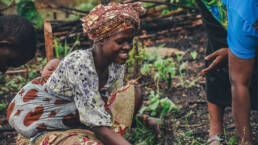Globally, 115 million boys alive today were married before the age of 18 versus 650 million girls who suffered the same fate. In Africa, approximately 125 million girls and women alive today were married before they turned 18. In Niger, 3 out of 4 girls are married before they turn 18, and the country’s minimum age for marriage for girls is 15 although many are married as young as 9. Child marriages occur because of poverty, causing girls to be used as objects to settle family debts or to make money. Furthermore, in some cultures, this practice is done and camouflaged as a way of ‘protecting’ a girl’s sexuality and family honor, the imposition of ‘family honor’ on girls and women robbing them of their individual honor and dignity. Child marriage is a product and example of cultures devaluing and discriminating against women and girls.
Direct threat to future of the youth.
Child marriage is a direct threat to the future and agency of young girls because it robs them of them ability to make decisions about their lives, disrupts their education, predisposes them to violence and abuse, and has led to early childbirth and increased maternal mortality and morbidity rates. For instance, WHRD Neema, fled the conflict inthe Democratic Republic of Congo as a girl and settled in the Dzaleka Refugee camp in Malawi. At the camp she lived with a family until they tried to force her to get married. After fleeing the situation and receiving support from Girls Not Brides, Neema began advocating for girls in refugee camps who are at risk of becoming child brides. She has reported cases where girls in refugee camps are married off in exchange for food and water for their families. Furthermore, due to the fact that girls’ bodies are not fully developed, some child brides who fall pregnant before their bodies can fully developed suffer serious complications or die during delivery.
In Senegal, Fatoumata Sabaly, a leader, and respected voice in her community, has been working with Grandmother Project, an organisation that strives to improve the health and wellbeing of women and children. Girls who are at risk of being married seek support from Sabaly who meets with the girl’s parents to advise them against the practice and encourage them to keep their daughters in school. As a mother of 12 and a grandmother, Sabalys advice holds weight in her community, and has kept many girls in school and increased girls’ self-confidence and hope for their futures. Child marriage has exposed girls to STDs and HIV/ AIDS. Women currently constitute more than half of all people living with HIV and AIDS-related illnesses, which remains among the leading cause of death for girls and women aged between 15 and 49.

Impact of HIV in young women
In Western and Central Africa, five young women become HIV positive for every three new infections among young men, and in Eastern and Southern Africa, young women acquire HIV 5–7 years earlier than their male peers. Child marriage perpetuates these negative health outcomes for women and girls. For example, child brides are forced to have unprotected sex with their husband, who often have multiple sexual partners and expose girls to sexually transmitted disease. With the worsening economic situation of many families attributed to the COVID-19 pandemic, child marriages in remote villages in Africa are expected to increase. UNFPA estimates that a one-year delay in the implementation of interventions to end. child marriage, coupled with the economic downturn due to the pandemic, could result in 13 million new child marriage cases in the next 10 years. The article Five things you did not know about practices that harm girls has already noted an increase in child marriages in the Kasai region of the Democratic Republic of Congo.



